Key takeaways
- Interdisciplinary teaching encourages connections between subjects, fostering a richer learning experience and sparking curiosity in students.
- Richard Feynman’s principles emphasize curiosity, clarity in explanations, and embracing the unknown, enhancing the collaborative nature of education.
- Emphasizing simplicity and using relatable analogies can make complex philosophical concepts more accessible and engaging for students.
- Creating an atmosphere of openness and vulnerability around not knowing can inspire deeper inquiry and rich classroom discussions.
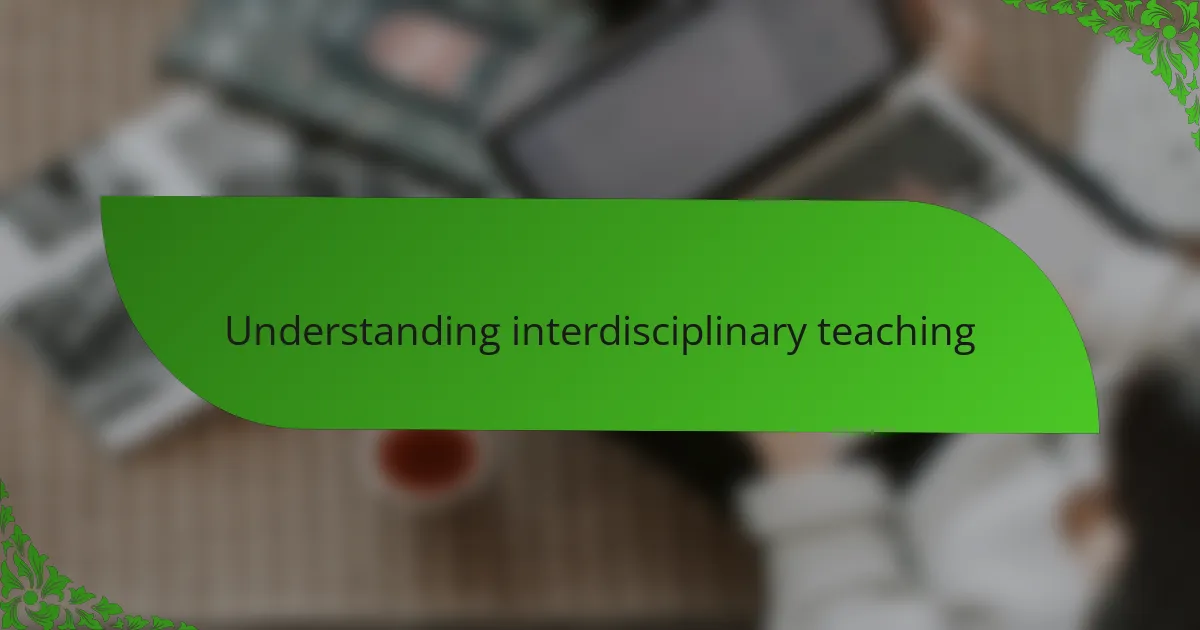
Understanding interdisciplinary teaching
Interdisciplinary teaching, to me, is like weaving together threads from different fabrics to create a richer tapestry. It breaks down the walls between subjects, encouraging students to see connections rather than separate silos of knowledge. Have you ever noticed how understanding a concept deeply often requires insights from more than one viewpoint?
When I first embraced interdisciplinary methods, inspired by Feynman’s curiosity and clarity, it felt exhilarating yet challenging. It pushed me to rethink how I organized lessons — no longer linear but more of a dynamic conversation among disciplines. This approach sparked not only my students’ interest but mine as well, making teaching feel more like exploration.
I wonder, how often do traditional classrooms miss the magic that happens when ideas from science, philosophy, and art intersect? That question keeps me motivated to keep blending subjects and watching those “aha” moments unfold naturally. It’s this boundary-crossing spirit that defines true interdisciplinary teaching.
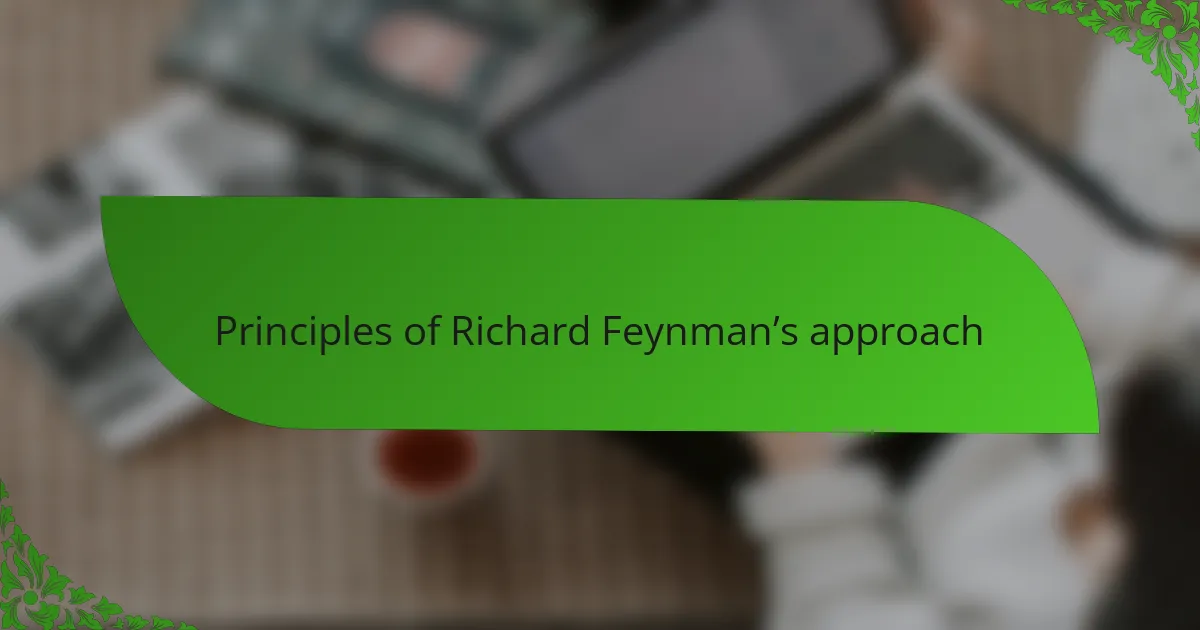
Principles of Richard Feynman’s approach
Feynman’s approach rests on a foundation of curiosity and relentless questioning. He believed that true understanding comes not from memorizing facts but from grasping the fundamental principles behind them. I’ve found that adopting this mindset with my students invites a kind of genuine inquiry where they feel safe to explore, question, and sometimes even be wrong.
Another principle that resonated deeply with me is Feynman’s insistence on clear, simple explanations. He often challenged himself to explain complex ideas as if teaching a beginner or a child. I started applying this in interdisciplinary settings, and it was amazing how breaking things down not only clarified concepts for students but also connected disparate ideas across fields.
Lastly, Feynman embraced the joy of discovery without fearing gaps in knowledge. This openness to learning alongside students transformed my teaching from a lecture into a collaboration. Have you ever noticed how admitting “I don’t know” can actually inspire more engagement and curiosity? That honesty made our interdisciplinary journey more authentic and exciting.
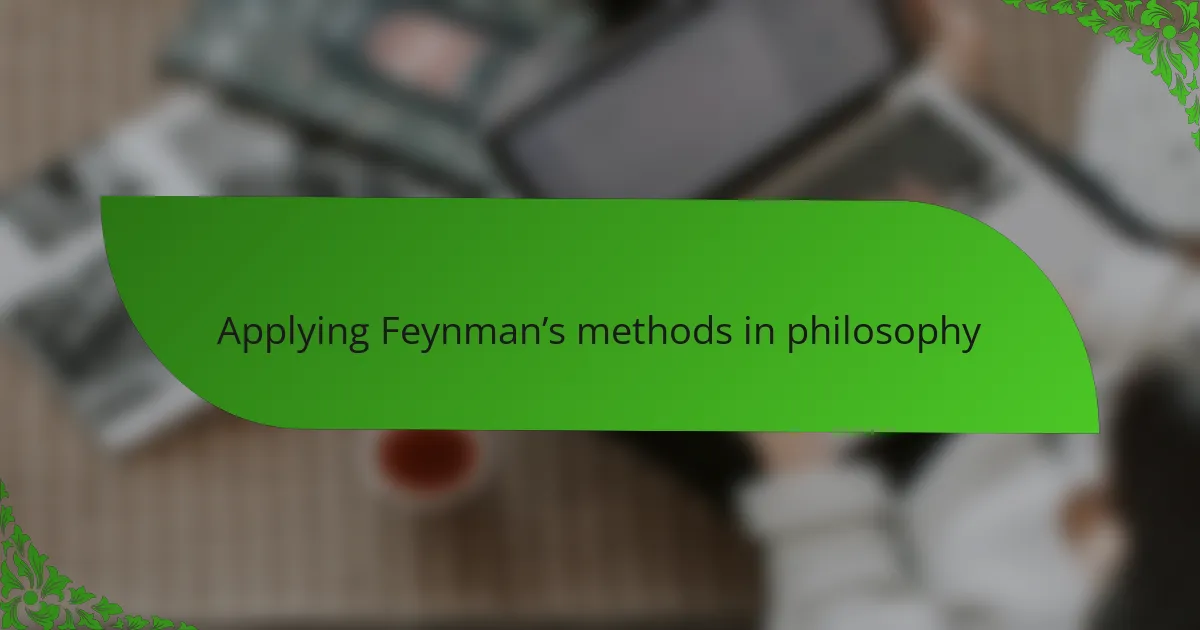
Applying Feynman’s methods in philosophy
Applying Feynman’s methods in philosophy has reshaped how I approach complex ideas. Instead of presenting dense theories as fixed truths, I encourage students to break them down and rebuild their understanding from the basics. It reminds me of a time when explaining existentialism through simple questions sparked a lively debate that felt more like shared discovery than a lecture.
I’ve noticed that Feynman’s focus on clarity pushes both me and my students to strip away jargon that often obscures philosophical discussions. When we tackle, say, the concept of free will by explaining it in everyday language, it becomes more accessible and sparks genuine curiosity. Isn’t that what we want in philosophy—a real engagement with ideas rather than rote memorization?
What’s most rewarding is how embracing the unknown, a core part of Feynman’s attitude, opens space for honest inquiry. Admitting that some philosophical puzzles don’t have easy answers invites students to explore boldly, without fear of being wrong. This vulnerability creates a classroom atmosphere where thinking deeply feels safe and exciting—I’ve seen it ignite passion where confusion once stood.
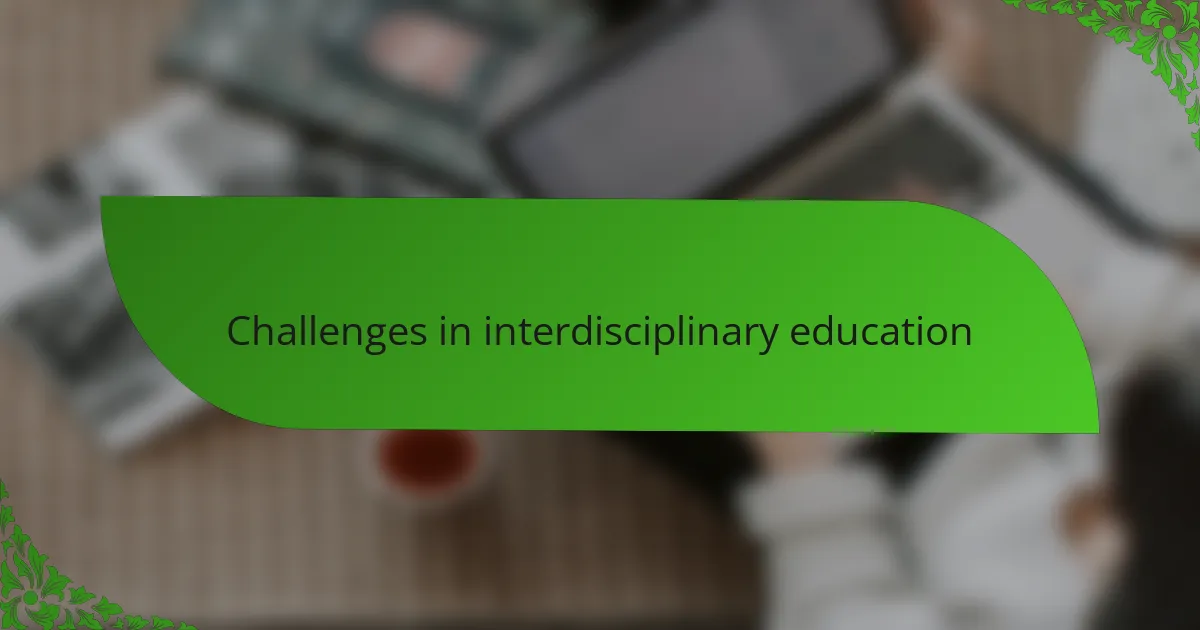
Challenges in interdisciplinary education
Navigating interdisciplinary education can feel like balancing on a tightrope. I’ve often found that integrating different fields invites a tangle of jargon and assumptions that don’t always mesh easily. Hasn’t it happened to you that what makes perfect sense in one discipline sounds alien or even contradictory in another?
Another challenge I faced was managing diverse expectations. Students and colleagues sometimes expect clear-cut answers or neatly packaged lessons, but interdisciplinary teaching thrives in ambiguity. I remember the frustration when plans had to be constantly adjusted, yet those moments taught me patience and the beauty of embracing complexity.
Time constraints also sneak in as a persistent hurdle. Crafting lessons that truly connect varied perspectives takes more preparation than sticking to one subject. Still, the payoff—seeing students light up as they make unexpected connections—makes every extra hour worthwhile. Don’t you think education is worth that investment?
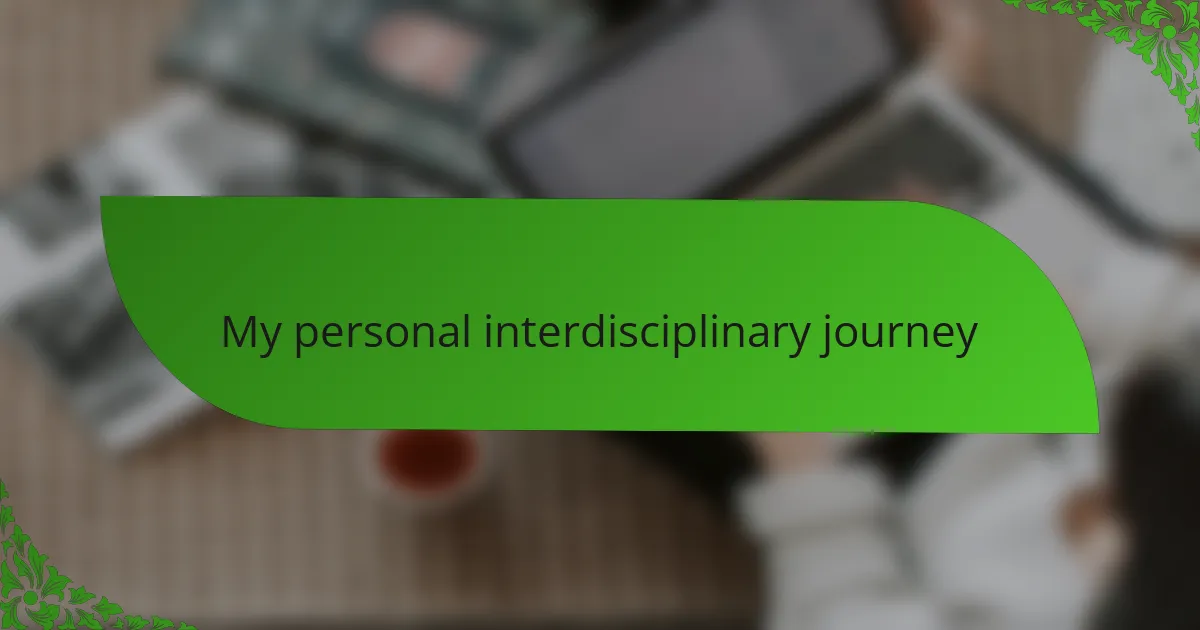
My personal interdisciplinary journey
My personal interdisciplinary journey began quite unexpectedly when I tried to explain a philosophical concept using a scientific analogy. That moment of blending two worlds felt like opening a door to endless possibilities—it was both thrilling and daunting. Have you ever stumbled upon an idea that suddenly made everything click across different subjects? That was exactly how I felt.
Over time, I learned to embrace the discomfort that comes with not having immediate answers—an attitude I credit to Feynman’s example. There were times when I questioned if mixing disciplines was muddying the waters instead of clarifying them, but those doubts often led to richer discussions and deeper insights. Isn’t it fascinating how uncertainty can spark such genuine curiosity?
What truly shaped my path was the realization that interdisciplinary teaching isn’t about forcing connections but about nurturing a conversation among ideas. I remember a class where students brought in perspectives from art, science, and ethics to explore a single question, each viewpoint adding layers I hadn’t anticipated. That collaborative energy made me believe wholeheartedly in the power of crossing boundaries.
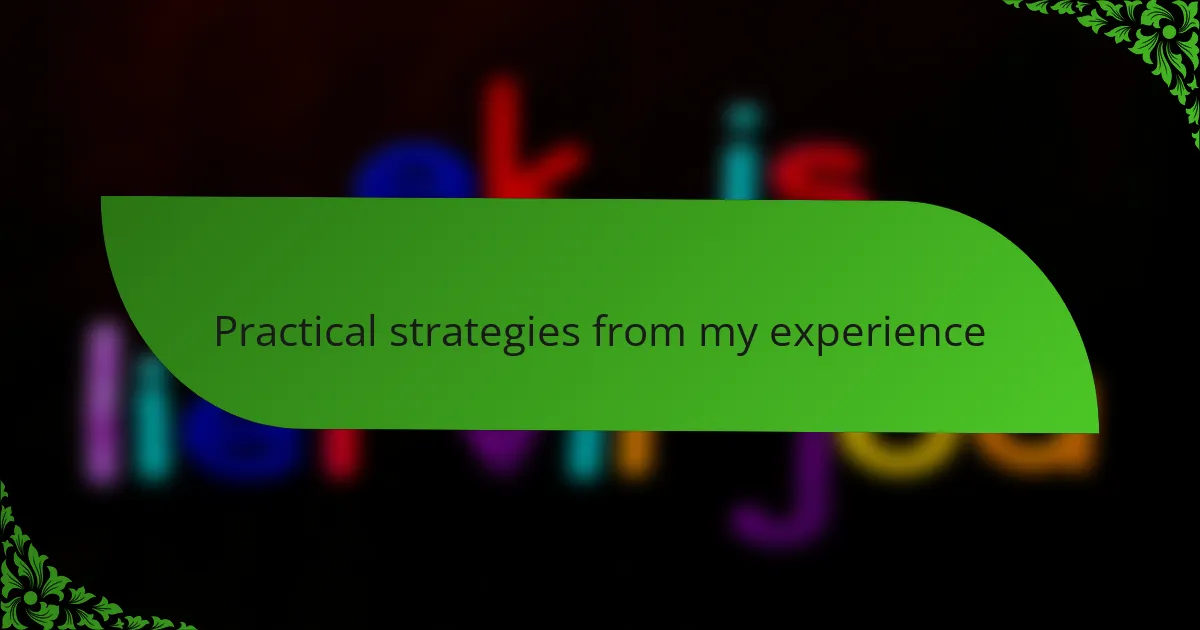
Practical strategies from my experience
One strategy I found invaluable was starting each lesson with a simple, open-ended question that invited students from all backgrounds to contribute. It’s incredible how a well-placed question can dissolve the barriers between disciplines and spark a collective curiosity. Have you ever noticed how much more engaging a class becomes when everyone feels invited to explore, rather than just listen?
Another practical tip that worked well for me was using analogies drawn from everyday experiences to explain complex ideas. For example, comparing ethical dilemmas in philosophy to everyday choices helped my students connect abstract concepts to their own lives. This approach brought a sense of familiarity and made discussions feel less intimidating and more personal.
Lastly, I made it a point to embrace moments of “not knowing” during lessons openly. Instead of rushing to fill gaps with easy answers, I encouraged joint exploration with my students. That vulnerability created a trusting atmosphere where curiosity thrived, and it was rewarding to see how much deeper our conversations became as a result. Isn’t it refreshing when a classroom turns into a shared quest for understanding?
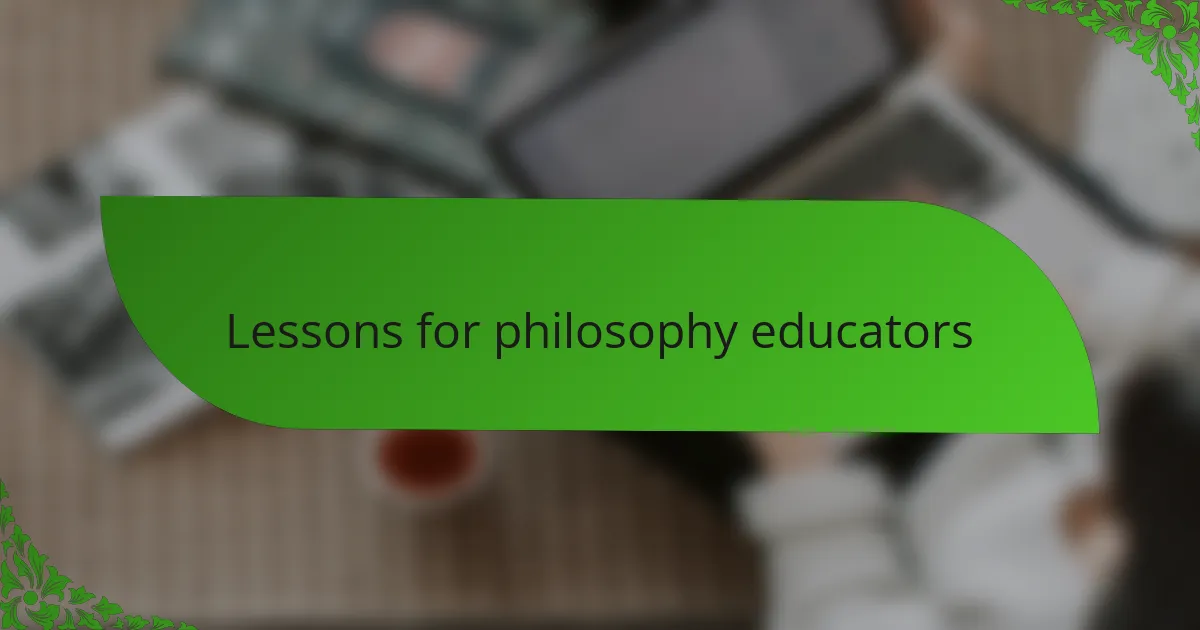
Lessons for philosophy educators
Philosophy educators can learn a great deal from embracing uncertainty in their teaching, much like Feynman did. I once hesitated to admit I didn’t have all the answers during a class discussion on metaphysics, but when I finally did, the students responded with enthusiasm and deeper questions. Doesn’t it seem that creating space for not knowing actually invites richer inquiry?
Another lesson I’ve taken to heart is the power of simplicity in communication. Explaining dense philosophical ideas without jargon felt like peeling an onion—sometimes it made me uncomfortable, but it helped the ideas become more relatable and alive for everyone. Have you noticed how stripping away complexity can lead to unexpected clarity and connection?
Lastly, encouraging students to draw connections across disciplines can transform how philosophy is experienced. I recall a session where a discussion on ethics got vibrant when science and art perspectives entered the conversation, sparking insights I hadn’t anticipated. Isn’t it inspiring when philosophy feels less like isolated thought and more like a lively dialogue spanning many fields?